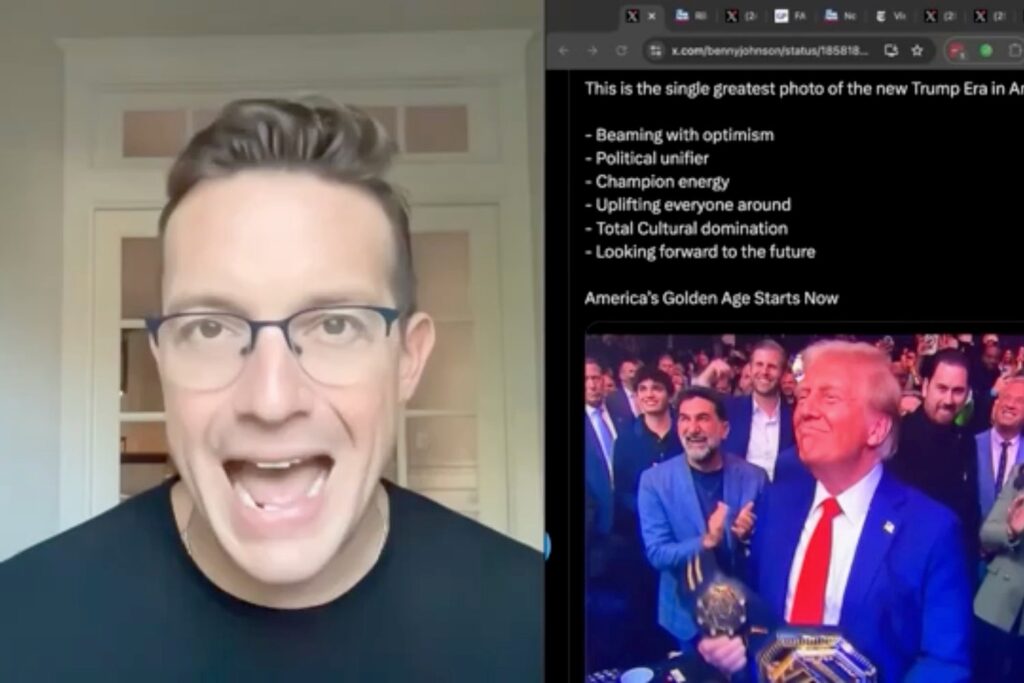More Americans are regularly getting their news from social media influencers, including 21% of all adults and 37% of surveyed 18 to 29-year-olds, according to a new report from the Pew Research Center. And with news on Monday that the Associated Press is laying off 8% of its workforce, the Pew report is just the latest sign that news consumption in the U.S. will likely continue to skew away from traditional institutions in the coming years.
The study looked at influencers with over 100,000 followers on a given platform, narrowing it down to 2,058 news influencers on Facebook, YouTube, Instagram, TikTok, and X. How does Pew define influencers? They’re “individuals who have a large following on social media and often post about news or political or social issues.” However, the study excluded any account that was part of an official news organization. Politicians were also excluded.
From there, the study looked at the social media habits of 10,658 Americans from July 15 to Aug. 4, 2024, and their consumption of content from the 2,058 influencers with sufficiently large followings identified on social media. The big names include right-wingers like Benny Johnson, Dinesh D’Souza, Matt Walsh, Jack Posobiec, and Charlie Kirk, while the liberals include people like Brian Tyler Cohen, Ashley Judd, and Heather Cox Richardson.
An overwhelming 85% of the influencers in the study had a presence on X, though it’ll be interesting to see how those numbers might compare to the media landscape a year from now. After the presidential election on Nov. 5, there’s been a huge exodus of liberals and centrists who are fed up with X owner Elon Musk and the way he’s turned the site into a safe space for far-right extremism.
The study found that 50% of the most popular influencers had a presence on Instagram, the second most popular platform for news influencers. The rest of the list included YouTube (44%), Facebook (32%), Threads (30%), TikTok (27%), LinkedIn (12%), Rumble (11%), Telegram 7%), Truth Social 5%), Gettr (4%), Gab (4%), and BitChute (less than 1%). There were no influencers on Bluesky, which again, may be an interesting thing to look at a year from now if Pew repeats the study.
The gender divide in the report is pretty interesting. Roughly 63% of the influencers were men, while 30% of the influencers were women, with the remainder nonbinary or gender not determined by researchers. TikTok had the highest percentage of female influencers at 45% but men still made up a larger percentage of the biggest influencer accounts at 50%. The biggest gender gap was on YouTube, where 68% of the influencers were male and just 28% were female.
There was also a big difference in generations. While 21% of U.S. adults overall say they regularly get news from influencers on social media, 18-29-year-olds topped the list at 37%, with 26% of 30-49-year-olds saying the same. Just 15% of Americans 50-64 say they regularly get news from influencers, and 7% of 65+ report the same.
27% of the influencers in the study were right-wing, according to their bios, while 21% were left-wing, with the remainder not expressing an explicit political orientation. TikTok was the only site where explicitly left-leaning influencers made up a larger percentage of influencers at 28% compared to 25% who were right-leaning on the platform.
About 77% of influencers had no past affiliation with a news organization while 23% have previously been employed by a traditional news outlet in some way, according to Pew. And it’s those 23% who were the least likely to express an explicit political affiliation.


